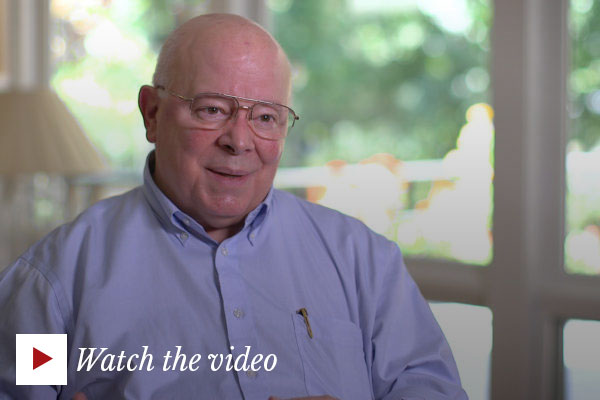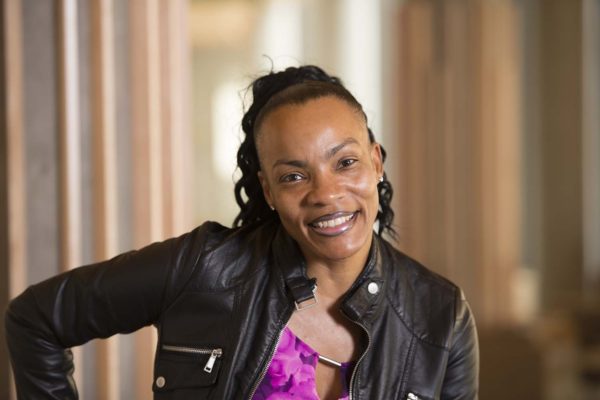In his research for his Oxford University Press book project, Stripes & Scars: How Americans Came to Fight a Bloody Civil War, Iver Bernstein noticed the prevalence and importance of hope in the American democratic experiment. Nowadays, it may seem that hope is in short supply with the United States growing increasingly divided politically, but Bernstein says that hope continues to be part of America’s foundation and future.
Not like apple pie …
It seems a little strange to think of hope as an American tradition. It’s not an American tradition like apple pie. It’s less obvious but maybe even more pervasive and more important. So hope is the key to American democracy. Right? You can’t have a democratic republic if you don’t have faith in democracy and in the democratic election process.
A declaration of hope …
The Declaration of Independence started the ball rolling in 1776 with its promise of all men are created equal, but that was kind of like throwing a ball over the wall. All men were not equal, even if they were “created equal” in 1776 — all people, of course. And Americans have had to continually double down on their faith that they could get over that wall — that they could retrieve that promise, they could redeem that promise some day.
Hope-maker-in-chief …
The Civil War was the key event in American history that ratified democracy and ratified hope. And the hope-maker-in-chief was Abraham Lincoln.
After the Battle of Gettysburg …
Lincoln had the task of trying to mobilize hope at that moment, when all seemed to be death and despair even what with the Union victory. What kind of war was this? And what kind of people could possibly make meaning out of this war? So when he says that “we here highly resolve that these dead shall not have died in vain,” that notion that you could reinvent the United States, reinvent the American people and reinvest in a kind of hopeful narrative that went back to the Declaration of Independence and its promises of freedom and equality that was based on the evidence of the carnage and pain and suffering that were all around was an amazing kind of reinvention of the United States as a nation founded in the moment of that annihilating death and destruction.
Lincoln’s imagined domino effect …
For Lincoln, there was a sense in which American democratic hope was a kind of center domino — if you can imagine democracy in the global context as being a domino effect. So the idea that whatever would happen to that American hope, that American democracy, would, if it was positive, have a kind of resounding positive effect around the globe. If it was negative, if anti-democratic forces were triumphing in America, similarly there would be a negative domino effect and democracy would weaken around the globe.
Putting your body on the line …
Keeping democracy alive, not just with your words but also with your body, was something that Lincoln did in a moment that doesn’t get as much attention as it should. In Philadelphia, right in front of Independence Hall, when Lincoln was just elected president and seven deep southern states had seceded, there he was assuming the presidency of this fractured republic — possibly with more slave states to secede in short order. And he’s in Philadelphia on Washington’s birthday in 1861 trying to get to the White House. Full stop, there’s a live assassination threat by pro-slavery conspirators on his life. And he stands on the steps of Independence Hall, and he says, if I can’t save this Republic, this Constitution and Union on the basis of the promise of freedom and equality in the Declaration of Independence, “I was about to say, I would rather be assassinated on this spot than surrender it.”
Martin Luther King Jr. continues the hope practice …
King has completed the hope practice of having marched with the Civil Rights activist community from Selma to Montgomery, and he says that “the arc of the moral universe is long but it bends toward justice.” He says, “How long? Not long …” And the hope practice that King is engaged with there is part of a very long Civil Rights tradition. In fact, the words he was using in that part of the speech came from Theodore Parker.
A century of hope …
Parker was a Boston abolitionist who uttered those words, wrote those words in 1853, over 100 years before. In the context of a different and much earlier phase of the Civil Rights movement. He was involved in exactly the same kind of effort to get enslaved people, free black people and their white allies in antebellum America to think about the need for hope in the Civil Rights struggle amidst times of great uncertainty.
Hope can prevail …
I do think hope will continue to triumph in America. We see peoples from all over the world flocking to the United States and investing hope against hope in the American Dream. There is reason, despite all the profound and very real uncertainty about the future of democracy in our current world, for considerable optimism.


